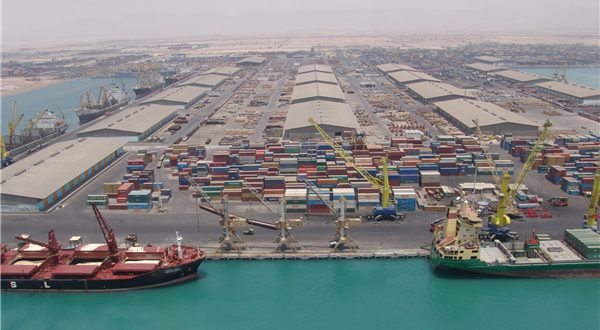Rastdad said on Monday that nearly nine million tons of cargo had been discharged from ships docking at Imam Khomeini Port in Southwestern Iran since March 2019. adding the figures showed a 49-percent increase in unloading activity at the port.
The official added that the total loading and unloading activity at the port had topped 25 million tons in the past six months. adding that the figure shows an increase of five percent compared to the similar period in 2018.
The statement came against the backdrop of reports suggesting large ships have been held up outside Imam Khomeini Port waiting for clearance of payments that have been affected by American sanctions on Iran.
Local government officials in Khuzestan province. where the sprawling port is located. had earlier denied the reports. saying ships were waiting more only because there have been increased activity in the port.
Rastad described as appropriate the pace of activity at Imam Khomeini Port. saying a maximum of 8.000 tons of cargo is discharged from one ship each day at berths of the port.
He suggested that unloading could be accelerated if storehouses in the port. where an estimated three million tons of cargo are held. reduce their inventories.
The official said the PMO had awarded contracts worth more than $8.5 million to build roads and bridges that could facilitate access to Imam Khomeini Port to speed up the discharge process in its storehouses.
Last month. Iran’s Ministry of Transportation announced that ports North and South of the country have registered a 1.9 percent increase in loading and unloading operations in the past 6 months. indicating a steady flow of trade despite the US unilateral sanctions against the country.
A report by Iran’s Ministry of Transportation on September 10 said load and unload was up 1.9 percent in 19 major ports between late March and early September 2019 compared to the similar period last year.
It said the weight of cargoes processed at the ports had increased by over 300.000 tons to exceed 68 million tons in the nearly-six-month period which covers half of the current Persian calendar year.
The report said the biggest increase in imports and exports. over 30 percent. had been recorded for dry bulk cargoes which reached 27.2 million tons in volume in the period.
Load and unload for liquid bulk had also increased by three percent to stand at 2.6 million tons. said the report. adding that processing was higher for other freight groups including 20-foot equivalent units (TEU). containers. general cargoes and oil-related shipments.
The report. which covered major Iranian ports like Imam Khomeini in the South and Anzali in the North. said increased processing activity at trade terminals was a sign of boom in Iran’s trade at a time of increased US economic pressure.
Washington’s unilateral sanctions against Tehran began in November 2018. five months after US President Donald Trump withdrew from an international deal on Iran’s nuclear program.
Claiming that the bans were working properly. Trump tightened them in May. only to see that Iran was finding new solutions to recoup the losses.
In August. Deputy Head of Iran Small Industries and Industrial Parks Organization (ISIPO) Ali Asqar Masaheb announced that Iran will undertake new measures to further strengthen its non-oil exports with a new bill to be tabled at the Iranian Parliament.
Iranian officials started planning for policies to counter the US possible sanctions a year before Donald Trump entered into office in early 2017. The policies are now proving effective as economic indexes are indicating inefficacy of the US pressures.
Earlier in July. Iranian Industry Minister Reza Rahmani said that despite US efforts to cripple Tehran’s economy. year-on-year comparison shows that the country’s domestic production has increased in the first quarter of the local calendar year (March 21-June 21).
 Iran Energy News Oil, Gas, Petrochemical and Energy Field Specialized Channel
Iran Energy News Oil, Gas, Petrochemical and Energy Field Specialized Channel




